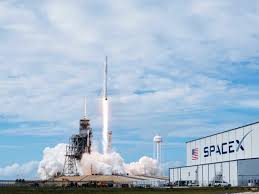
Breaking News
6.5x55 Swedish vs. 6.5 Creedmoor: The New 6.5mm Hotness
Best 7mm PRC Ammo: Hunting and Long-Distance Target Shooting
 Christmas Truce of 1914, World War I - For Sharing, For Peace
Christmas Truce of 1914, World War I - For Sharing, For Peace
Top Tech News
 EngineAI T800: Born to Disrupt! #EngineAI #robotics #newtechnology #newproduct
EngineAI T800: Born to Disrupt! #EngineAI #robotics #newtechnology #newproduct
 This Silicon Anode Breakthrough Could Mark A Turning Point For EV Batteries [Update]
This Silicon Anode Breakthrough Could Mark A Turning Point For EV Batteries [Update]
 Travel gadget promises to dry and iron your clothes – totally hands-free
Travel gadget promises to dry and iron your clothes – totally hands-free
 Perfect Aircrete, Kitchen Ingredients.
Perfect Aircrete, Kitchen Ingredients.
 Futuristic pixel-raising display lets you feel what's onscreen
Futuristic pixel-raising display lets you feel what's onscreen
 Cutting-Edge Facility Generates Pure Water and Hydrogen Fuel from Seawater for Mere Pennies
Cutting-Edge Facility Generates Pure Water and Hydrogen Fuel from Seawater for Mere Pennies
 This tiny dev board is packed with features for ambitious makers
This tiny dev board is packed with features for ambitious makers
 Scientists Discover Gel to Regrow Tooth Enamel
Scientists Discover Gel to Regrow Tooth Enamel
 Vitamin C and Dandelion Root Killing Cancer Cells -- as Former CDC Director Calls for COVID-19...
Vitamin C and Dandelion Root Killing Cancer Cells -- as Former CDC Director Calls for COVID-19...
 Galactic Brain: US firm plans space-based data centers, power grid to challenge China
Galactic Brain: US firm plans space-based data centers, power grid to challenge China
SpaceX Launches Its 12th Resupply Mission to the ISS

On Monday, SpaceX is poised to end a 40-day launch drought in the United States with a cargo run to the International Space Station. The commercial space outfit will fire off its 12th resupply service mission for NASA from Kennedy Space Center using a fresh Falcon 9 rocket. On top, a Dragon capsule with over 6,400 pounds of supplies—a typical haul could include a variety of toilet paper (the Russians prefer a rougher texture while the Americans opt for a softer touch), fresh socks, and most importantly, tortillas. Mexican food has been a staple in low-Earth orbit since the 80s, so regular reups of Picante sauce are a must.
Last week, SpaceX performed a hold-down test fire of the CRS-12 Falcon 9 rocket and is targeting a 12:31 pm Eastern liftoff on Monday. Minutes after the booster delivers SpaceX's Dragon to a preliminary orbit, it will attempt a return flight for touchdown at Landing Zone 1 on Florida's space coast.Along with the groceries, ISS cargo drops have included hardware like an espresso machine, a handy 3-D printer, and even a relatively huge inflatable module currently being accessed and tested by the crew. In addition to the essentials, Dragon will be carrying enough resources to aid in over 250 research projects. This includes a NASA-funded experiment to study cosmic rays dubbed CREAM (for Cosmic Ray Energetics and Mass), mice to study the effects of long-duration spaceflight on vision and joints, and seeds to continue growing plants in microgravity. The agency also partnered with Hewlett Packard to send up a supercomputer to determine if off-the-shelf computer hardware can properly operate in space.

 The State's Last Stand
The State's Last Stand


